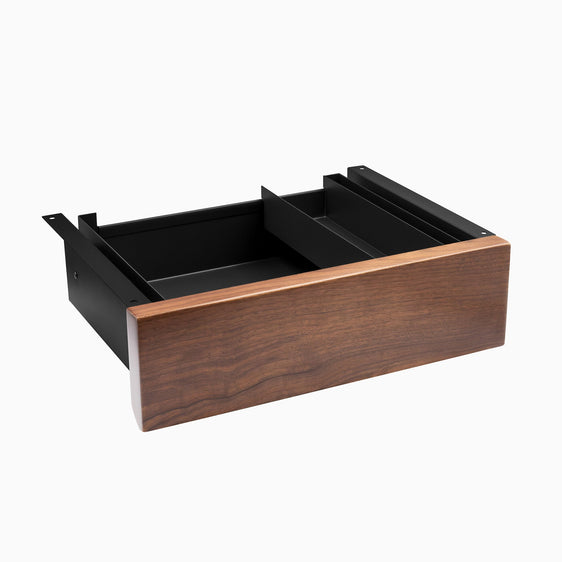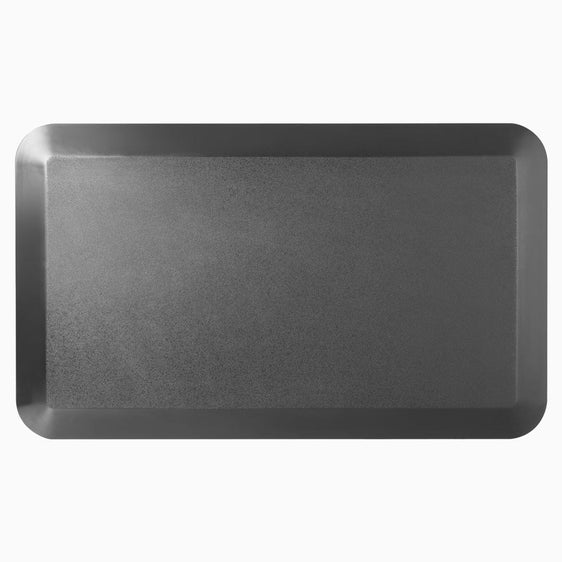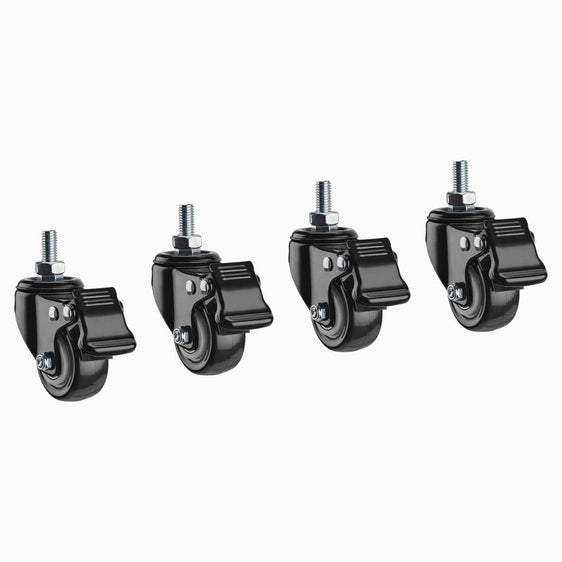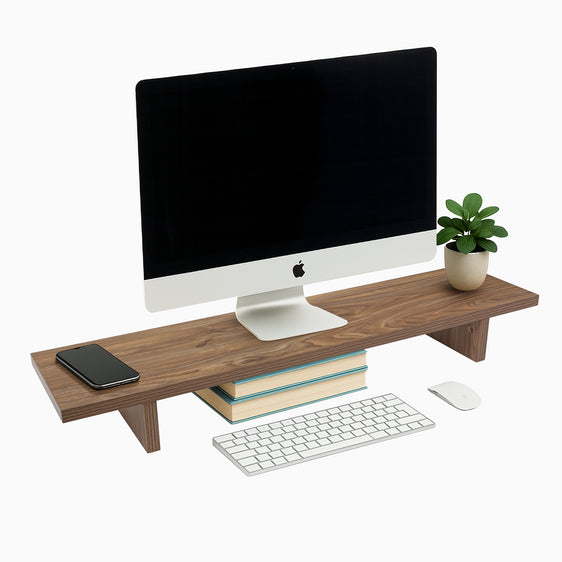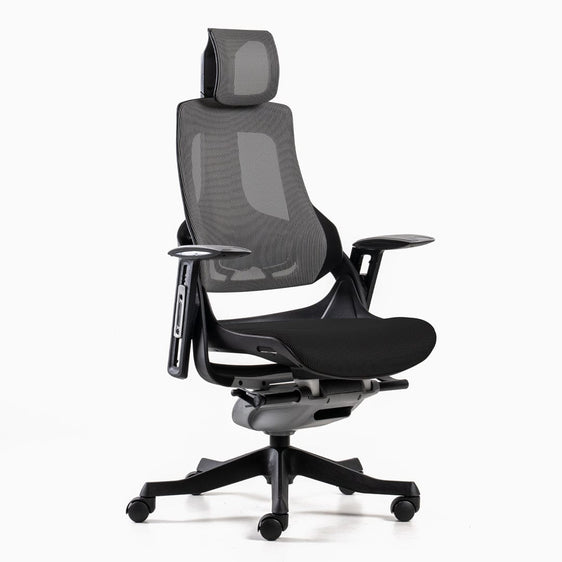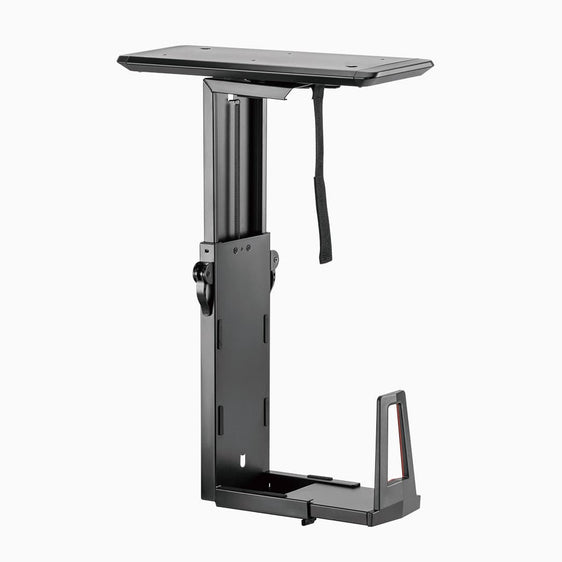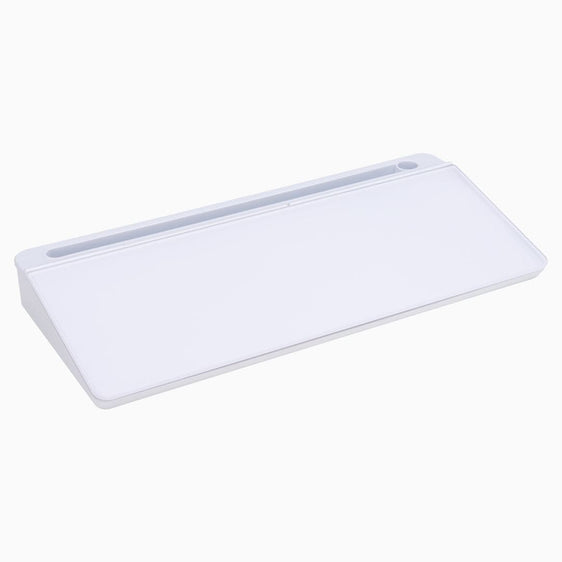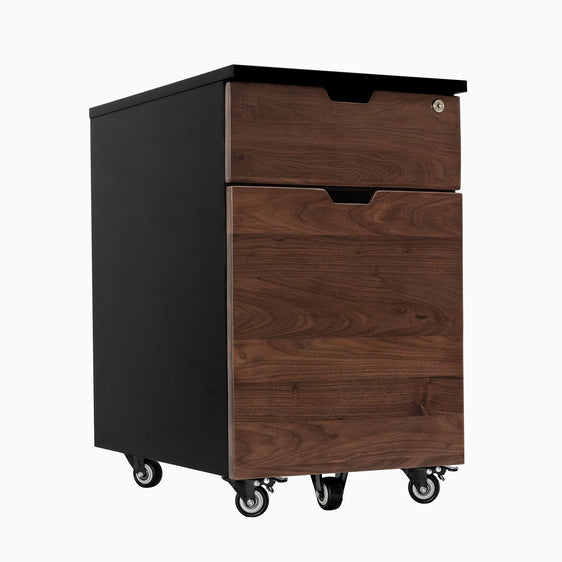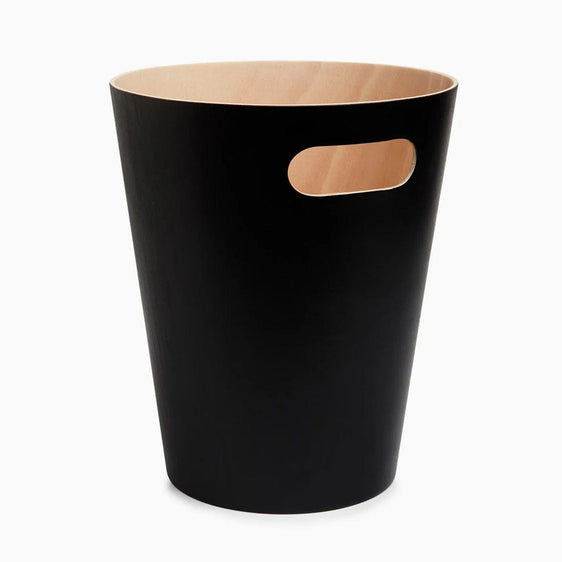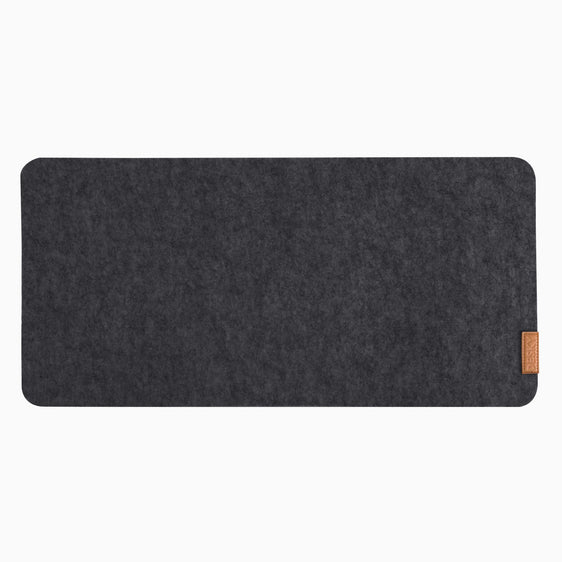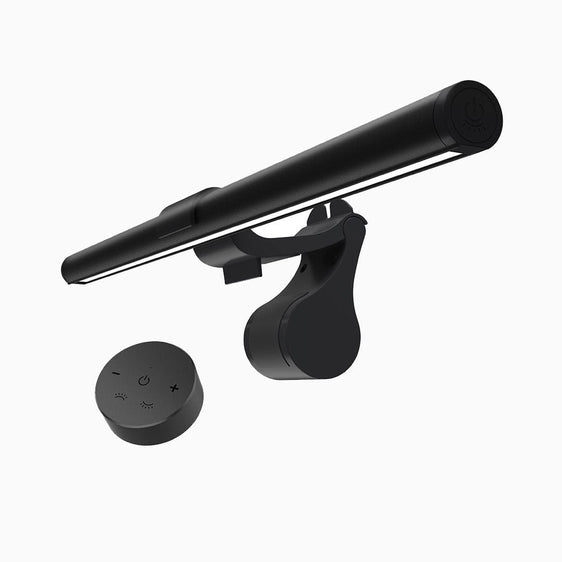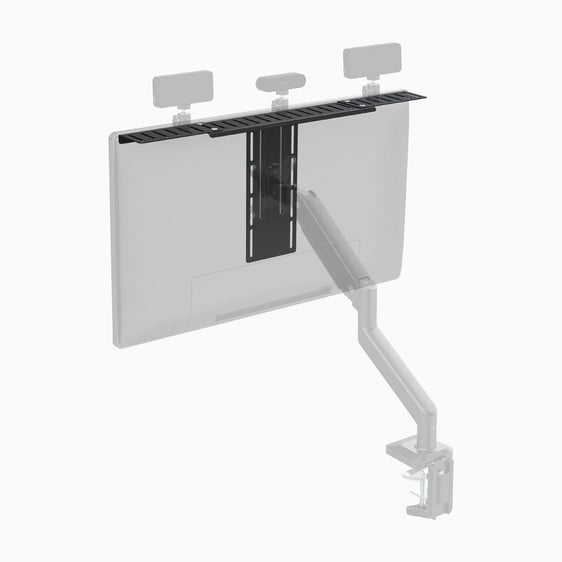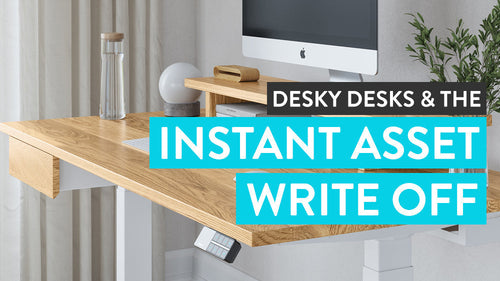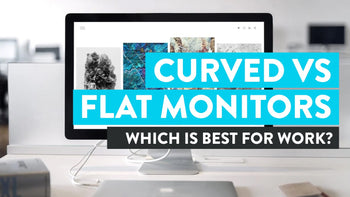
News
Curved Vs. Flat Monitor: Which Is Best For Work?
Hayden AdamsChoosing the right monitor for work can be difficult. As if the abundance of monitors on the market wasn’t enough to boggle the mind, the addition of curved monitors to the market has made it even harder to choose.
So what is the difference between a a flat monitor and curved monitor, and what is the best for you? In this article, we'll explore the differences between curved and flat monitors, and guide you in choosing the best monitor for you.
The differences between these two setups can be admittedly be quite confusing, so in this article, we will explore the various factors you should consider before deciding whether to opt for a flat or curved monitor for your work setup.
Difference Between Curved and Flat Monitor Setups

For gaming, we crave immersive experiences that transport us to virtual worlds entirely. However, this might not be ideal for everyone at work. Increasingly, our work lives require multiple monitors, and for people in creative industries, the line between what works for productivity and leisure can be even blurrier. Curved monitors, often associated with gaming, are now being considered for work environments. So, are curved monitors good for work? Their immersive design can enhance focus and reduce eye strain, but they may not suit every task or workspace. On the other hand, flat monitors remain a versatile choice. For those using their home PC for work, the decision between a curved vs flat monitor for work might also factor in personal preferences for recreation outside of work hours.
So, which to choose? At first glance, the only apparent difference between curved screens and flat monitors is the screen design. However, upon closer examination, we discover several factors that set them apart. Sure, on paper the colour quality, IPS panel, resolution and refresh and response rates are relatively similar in both curved and flat monitors. And you won't miss out on any significant features when opting for either a curved or flat monitor for office work. Nevertheless, there are certain features unique to each type of monitor that might make one more suitable for a specific application than the other. Let's dive into the differences between curved panels and flat monitors.
Which Have The Best Quality of Colour?
Flat and curved monitors differ in the quality and range of colours they can display. Curved monitors generally outperform flat screens, as every pixel on curved display is angled perfectly towards the eye.
Colours on a flat panel may distort as they move away from the eye, resulting in more severe angle-dependent colour variations. This can make them unreliable for some purposes. Monitors are increasingly adopting HDR for its high-quality luminance, vivid whites and deep blacks, and many flat monitors also offer HDR, which to some extent alleviates this problem.
Which Has The Higher Refresh Rate?
There is a huge range of different refresh rates depending on the model and price, and whether you choose a full curved panel or flat panel. Options range from the standard 60Hz found in budget monitors, right up to refresh rates of 240Hz or even higher for the most expensive curved models. Given their larger size, curved monitors with similar refresh rates would be more expensive than their flat-screen counterparts.
Don’t fret if the budget’s tight though, as when it comes to work purposes, the refresh rate is not as crucial as it is for gaming and tasks that require quick responses to colour changes and movements. Therefore, for the majority of jobs and tasks, the refresh rate is less of a problem.
Are Curved Monitors Bigger?

As they are wider and have more complex dimensions, the amount of material used to produce a curved monitor is higher, and as such, curved monitors are generally larger than flat-screen monitors. The larger size, designed to engage the user's peripheral vision, adds to this issue. In effect, this means that a curved monitor will occupy more desk space than a flat-screen monitor of the same screen size in most cases. When comparing 1 curved monitor vs 2 flat monitors, the choice often comes down to workspace efficiency and personal preference
Use of Space
When it comes to space utilization, flat monitors have an advantage. Their design allows for easier integration into various setups, such as wall mounting or fitting into compact workstations. Flat monitors take up less desk space and provide more flexibility in terms of placement and arrangement. However, in the discussion of curved monitor vs flat for work, curved monitors can offer a more immersive viewing experience, potentially enhancing productivity in tasks requiring focus. So, is a curved monitor better for work? It depends on individual needs and workspace constraints, as curved monitors may require more desk space and specific positioning to maximize their benefits.
Which Are Heavier, Flat or Curved Monitors?
As the width and size of the curved gaming monitor will increase, so does its weight. As such, curved monitors tend to be heavier compared to flat-screen monitors. Due to their larger size, curved gaming monitors also might require a larger desk or dedicated gaming station to accommodate them properly. This is worth being aware of if you use a standing desk, as you’ll need to be sure your motors can handle the extra weight!
{{ spec_dual_hardwood_desk }}
Are Curved Monitors More Expensive?
Curved monitors generally come at a higher price compared to flat monitors, simply because they are bigger. Since most curved monitors are larger in size, they use more material and also tend to be more expensive overall.
Ideal Viewing Distance
When comparing curved screens and flat monitors, the viewing distance remains relatively unchanged. Curved displays use the curvature of the display to mimic human vision, creating an illusion of distance and depth. Flat screens lack this natural depth here, and for most curved monitors provide a more comfortable and immersive viewing experience once you become accustomed to them.
So, even though you would sit at the same distance from the screen, a curved screen better aligns with the curvature radius of the cone of vision, providing a more comfortable viewing experience. This can help to reduce eye strain and related ailments.
Screen Ratios
The screen ratio differs between curved and flat monitors. Curved monitors often have a screen ratio of 21:9, which means the width is 2.3 times greater than the height. A higher screen ratio translates to a wider field of view, which is particularly desirable for gamers. On the other hand, flat displays have a less aspect ratio and narrower field of view, which can be preferable for typing, reading and focussing in on details on the screen.
What is a Curvature Rating?
The display size and measurement significantly differ between curved and flat-screen monitors. Curved monitors are rated using measurements such as 1000R or 1800R, where the letter "R" represents radius and the number before it indicates the measurement in millimetres. In contrast, flat-screen monitors are measured diagonally across the rectangle of the entire screen itself.
Which Has The Best Immersive Qualities?
The immersive experience offered by curved and flat monitors differs significantly. Curved monitors create an illusion of larger display margins than they actually have. Additionally, split-screen 2.0 technologies allow curved monitors to be divided into multiple manageable windows, further enhancing the immersive effect of curved models.
The curvature of these monitors provides a more immersive experience by ‘filling in’ the users peripheral vision, making them feel fully engaged in the displayed content, whether it's a game or any other application, and can be excellent for visual work.
Are Curved Monitors Better For Eye Comfort?

Our eyes naturally perceive the world in a curved manner – this is due to our peripheral vision, or the things we see in the corner of our eye. Curved displays are designed to maximize the field of vision when working, minimize eye movement, and reduce eye strain as a result. Many studies, including this study from 2023, have shown that curved displays are significantly more comfortable for the eyes compared to side-by-side arrangements of flat monitors. But is a curved monitor good for programming? For developers, the immersive design of a curved monitor can enhance focus and make it easier to view long lines of code or multiple windows side by side, potentially improving productivity and comfort during extended coding sessions.
Preventing Screen Glare
Proper placement of flat-screen monitors in your home or workplace is crucial since they are more susceptible to glare. Curved monitors tend to be less affected by glare due to their curved design, as the curvature helps to reduce reflections and minimize the impact of external light sources. Curved monitors come into their own in bright, well-lit environments in environments with bright lighting or many windows. If you are using flat screen monitors, be mindful of your placement, as they will glare back at you if placed in direct light.
Which Has Better Aesthetics?
The aesthetic appeal of curved and flat monitors is subjective and depends on personal preference. Curved monitors often have a sleeker, more modern look that can enhance the overall visual appeal of a workspace, and would appeal to businesses with a more modern ethos and aesthetic. Flat monitors on the other hand have an almost classic appearance that blends well with different environments.
Curved and Flat Screens For Multi-Screen Setups
Mounting a curved computer monitor on an office desk can be challenging due to its curvature. Limited space can make it difficult to position your screens ergonomically, especially if multiple monitors are involved. Setting up two curved monitors side by side can be particularly challenging. In contrast, flat monitors are more straightforward to attach and align. Curved monitors require precise centring when coupled, to ensure that the curvature effectively encompasses the viewer's entire field of vision.
{{ spec_quad_arm }}
Could it Effect My Existing Hardware?
Pixels are a set size, and only so many can fit on one screen. As the monitor's width increases, so does the number of pixels on display. This is particularly relevant when choosing the best curved monitor for your needs. If you plan to play games or work on an ultra-wide panel, you'll need a graphics card that can handle the extra output. Additionally, selecting the best size curved monitor for work depends on your tasks and desk space. Monitors in the 34- to 38-inch range are ideal for productivity-focused tasks, offering ample screen real estate without being overwhelming. However, be sure to check your hardware specs and consider upgrading your graphics card to support the desired resolution before you buy!
Device Compatibility
Compatibility with other devices is an obviously essential consideration when choosing monitors – but you’d be surprised how few check. As you’d expect, both types of monitor typically offer a range of connections, so you can usually bank on a variety of HDMI, DisplayPort, and USB ports. It is crucial to ensure that the chosen monitor has the necessary ports to connect to your devices, so it’s important to double check.
Pros and Cons of Curved and Flat Monitors

Now, let's consider the pros and cons of curved monitors alongside flat monitors for work. Curved monitors have garnered significant attention for their immersive features and unique design, offering benefits such as reduced eye strain, enhanced focus, and a more natural viewing experience. They offer several advantages that are not found in flat-screen monitors, but how many of them do you actually need in the office? Here are the pros and cons of using curved monitors for work:
Advantages of Curved Monitors
- Increased Immersion: Curved monitors provide a heightened sense of immersion, particularly beneficial for game and graphic designers who want to feel fully engaged in their work and need a wide range of vision.
- Ideal for Multi-Tasking: The ultra-wide screen of curved monitors offers ample space for multiple tabs and applications, eliminating the need for a third monitor or multi-monitor setup.
- Suitable for High-Resolution Work: Curved monitors are well-suited for tasks that demand high-resolution visuals, most jobs such as video editing or graphic design.
- Eye Comfort: The curvature of the monitor aligns with the natural curvature of the human eye itself, reducing eye strain and providing a more comfortable viewing experience, especially during long work sessions.
Disadvantages of Curved Monitors
- Heavier Build: Curved monitors tend to be heavier than their flat counterparts due to their wider design, requiring sturdy support.
- Graphic Card Requirement: To fully utilise the capabilities of a curved monitor, a compatible graphics card is necessary.
- Initial Adjustment: It may take some time to get accustomed to the curved display, especially if you're used to flat monitors.
- Higher Cost: A curved screen is generally more expensive than flat-screen options, making just one monitor a significant investment.
Flat-screen monitors, often referred to as straight monitors, have long been a staple in most workplaces. They are favored for their simplicity, versatility, and ease of integration into various setups. However, for tasks requiring high color resolution or a more immersive viewing experience, curved monitors may be the better choice, especially for professionals in creative fields such as design or video editing. Let's have a closer look at the pros and cons of using a flat-screen monitor for work:
Advantages of Flat Monitors
- Lightweight and User-Friendly: Flat monitors are lightweight and easy to handle, ensuring convenient setup and mobility.
- Affordability: Flat monitors are typically more budget-friendly compared to curved monitors.
- Suitable for Basic Tasks: They are well-suited for simple work requirements without the need for advanced features.
- Wider Aspect Ratio: Flat monitors support a wider aspect ratio, creating an extended horizontal viewing area.
- Multi-Monitor Setups: Flat screens are ideal for creating multi-monitor configurations with monitor stands or risers.
Disadvantages of Flat Monitors
- Limited Immersive Experience: Unlike curved monitors, flat screens do not provide a fully immersive viewing experience.
- Reduced Picture Quality at Edges: The picture quality near the edges of a flat screen may not be as sharp or vibrant.
Ultimately, the decision between a curved or flat monitor will depend on the individual choosing, and their needs and preferences. For gamers and those seeking a more immersive experience at work, a curved monitor with a high refresh rate and wide screen ratio may be the ideal choice. On the other hand, for work-related tasks where refresh rates are less critical, a flat monitor can offer practicality, ease of setup, and space efficiency.
When deciding, consider factors such as cost, the viewing angles, distance, screen ratio, color accuracy, immersion, eye comfort, and screen glare. For multi-screen setups, consider space utilisation, and finally, aesthetics. And don’t forget to check compatibility! Just follow the guidance above, and you should now be able to work out which type of monitor best suits your requirements.

